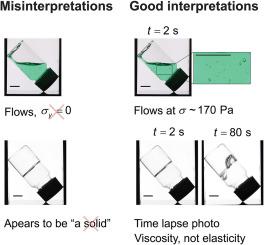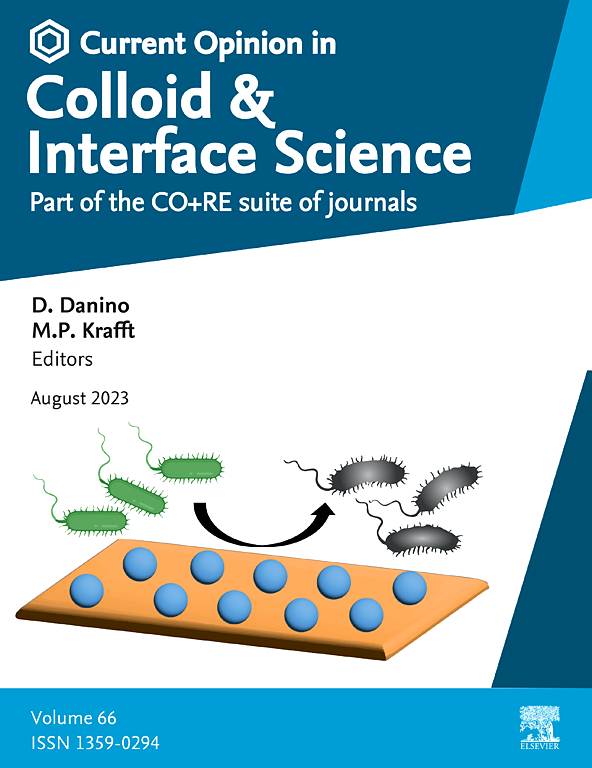实践中的原流变学:避免误读
IF 7
2区 化学
Q1 CHEMISTRY, PHYSICAL
Current Opinion in Colloid & Interface Science
Pub Date : 2024-09-21
DOI:10.1016/j.cocis.2024.101866
引用次数: 0
摘要
原流变学认为,任何观察到的流动或变形都是推断定量流变特性的机会。虽然这为深入了解流变学提供了很多机会,但也存在误解相关物理学原理的重大风险,例如将液体误解为固体,或将粘性流动时间误解为粘弹性弛豫时间。我们将介绍这些及其他可能出现的错误,通过案例研究来说明问题的严重性,并将错误的解释与正确的方法和解释进行对比。有些问题对于涉及胶体粒子的材料和涉及表面张力的流动尤为重要。无论读者是从倾斜的样品瓶、延时重力驱动流动、反弹试验、模具膨胀还是任何其他原流变学观察结果进行推断,这里的例子都可以作为避免原流变学中错误数据的指南。本文章由计算机程序翻译,如有差异,请以英文原文为准。

Protorheology in practice: Avoiding misinterpretation
Protorheology is the paradigm that any observed flow or deformation is a chance to infer quantitative rheological properties. While this creates many opportunities for insight, there is significant risk of misunderstanding the physics involved, e.g. misinterpreting a liquid as a solid or mistaking viscous flow time as viscoelastic relaxation time. We describe these and other potential mistakes, use case studies to show how serious the problems can be, and contrast misinterpretations with correct approaches and interpretations. Some issues are especially important with materials involving colloidal particles and flows involving surface tension. Whether the reader is making inference from a tilted vial, time-lapse gravity-driven flow, a bounce test, die swell, or any other protorheology observation, the examples here serve as a guide for avoiding bad data in protorheology.
求助全文
通过发布文献求助,成功后即可免费获取论文全文。
去求助
来源期刊
CiteScore
16.50
自引率
1.10%
发文量
74
审稿时长
11.3 weeks
期刊介绍:
Current Opinion in Colloid and Interface Science (COCIS) is an international journal that focuses on the molecular and nanoscopic aspects of colloidal systems and interfaces in various scientific and technological fields. These include materials science, biologically-relevant systems, energy and environmental technologies, and industrial applications.
Unlike primary journals, COCIS primarily serves as a guide for researchers, helping them navigate through the vast landscape of recently published literature. It critically analyzes the state of the art, identifies bottlenecks and unsolved issues, and proposes future developments.
Moreover, COCIS emphasizes certain areas and papers that are considered particularly interesting and significant by the Editors and Section Editors. Its goal is to provide valuable insights and updates to the research community in these specialized areas.

 求助内容:
求助内容: 应助结果提醒方式:
应助结果提醒方式:


